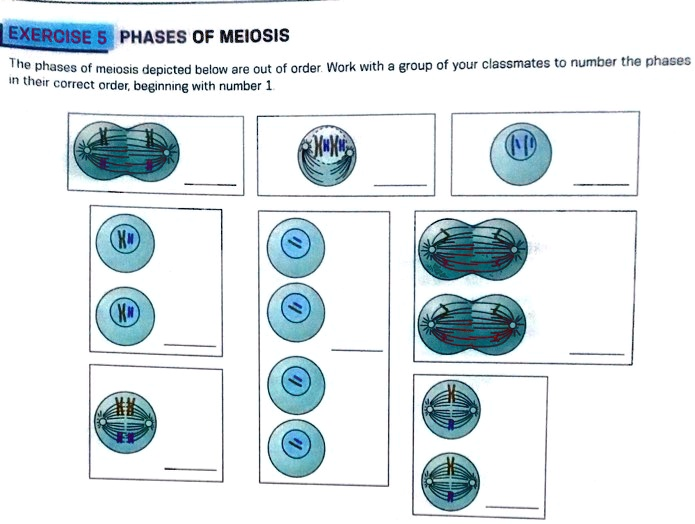Phases of Meiosis The phases of meiosis depicted below are out of order. Work with a group of your classmates to number the phases in their correct order, beginning with number 1.

The Correct Answer and Explanation is:
Correct Order of Meiosis Phases
- Top Middle Box: Prophase I
- Bottom Left Box: Metaphase I
- Top Left Box: Anaphase I
- Middle Left Box: Telophase I & Cytokinesis
- Top Right Box: Prophase II
- Bottom Right Box: Metaphase II
- Middle Right Box: Anaphase II
- Middle Center Box: Telophase II & Cytokinesis
Explanation of Meiosis
Meiosis is a specialized type of cell division that reduces the chromosome number by half, creating four genetically distinct haploid cells from a single diploid parent cell. This process is essential for sexual reproduction and is divided into two main stages: Meiosis I and Meiosis II.
Meiosis I: Separation of Homologous Chromosomes
The process begins with Prophase I (Image 1: Top Middle). In this stage, the cell’s DNA has already replicated. The chromosomes condense and pair up with their homologous partners to form bivalents. Genetic recombination through crossing over often occurs here, increasing genetic diversity. Next, in Metaphase I (Image 2: Bottom Left), these homologous pairs align along the center of the cell, known as the metaphase plate.
During Anaphase I (Image 3: Top Left), the spindle fibers contract, pulling the homologous chromosomes apart to opposite poles of the cell. It is important to note that the sister chromatids remain attached. The first division concludes with Telophase I (Image 4: Middle Left), where the cell divides to form two haploid cells. Each of these new cells contains one chromosome from each homologous pair, and each chromosome still consists of two sister chromatids.
Meiosis II: Separation of Sister Chromatids
Meiosis II proceeds much like a mitotic division. It starts with Prophase II (Image 5: Top Right), where the chromosomes in the two haploid cells condense again. Then, in Metaphase II (Image 6: Bottom Right), the chromosomes in each cell line up individually at the metaphase plate.
In Anaphase II (Image 7: Middle Right), the sister chromatids are finally pulled apart and move to opposite poles. This separation results in individual, unreplicated chromosomes. The entire process of meiosis ends with Telophase II (Image 8: Middle Center). The cells divide once more, resulting in a total of four unique haploid daughter cells, which can develop into gametes like sperm or eggs.
